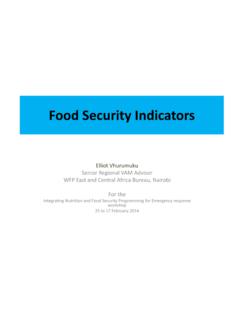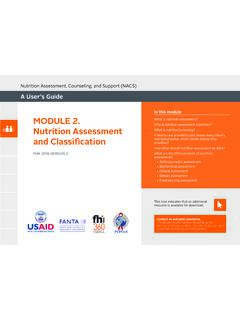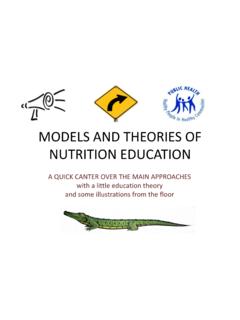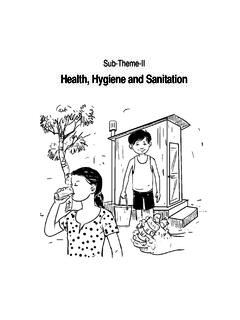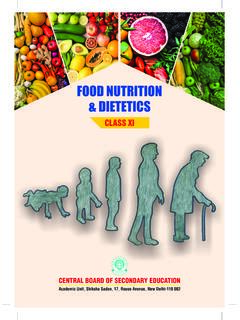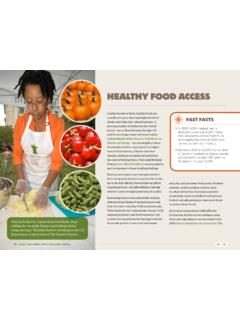Transcription of What are the Psychological Effects of Hunger on Children?
1 What are the Psychological Effects of Hunger on Children? Despite being born in one of the world s wealthiest countries, a significant proportion of children in the United States are food insecure: They do not have enough nutritious food for an active, healthy life. food insecurity often leads to Hunger , the painful sensation caused by lack of food . Research shows how food insecurity and Hunger can harm the health and educational outcomes of children. However, these harms can be prevented through effective programs such as SNAP, WIC, the National School Lunch Program, and the Summer food Service Program, helping children to reach their full potential. Many children in the United States don t have enough to eat. In 2014, million children in the United States were food insecure (about 1 in 5).
2 These children lived in households that were unable to always provide adequate Households with incomes near or below the federal poverty line ( ), single-parent households ( % women; men), and Black ( ) and Hispanic ( ) households had particularly high levels of food Low-income families report that eating healthily is especially difficult because fresh fruits and vegetables in their neighborhoods are rare, expensive, and of poor Hunger hurts children in multiple ways. Low food security and Hunger can contribute to toxic stress the strong, unrelieved activation of the body s stress management A lack of healthy food can lead to malnutrition,v health problems caused by a nutritionally-deficient diet. We all have a limited cognitive bandwidth. People tend to spend their limited mental reserves on resources that they lack, and so hungry children focus on food , which can lead to neglect of other areas of life such as food insecurity is frequently stigmatized through media messages and public discourse.
3 Families often work to keep their food insecurity hidden, and children may feel stigmatized when using free and reduced lunch programs and other social Hunger has negative outcomes for kids. Studies show that food insufficiency is associated with higher prevalence of poor health conditions, including stomachaches, headaches, and colds;viii and that severe Hunger can predict chronic illness among both preschool- and school-age Hunger -related toxic stress can negatively affect brain development, learning, information processing, and academic achievement in Malnutrition in the first years of life is especially harmful, impacting physical growth, decreasing resistance to disease, limiting the size and functioning of children s brain structures, and stunting intellectual Severe Hunger is associated with anxiety and depression among Research shows that families lack of sufficient food , irrespective of their income.
4 Is associated with depressive disorders and suicidality in food insecure children may perform worse on academic achievement tests and learn less during the school Children may feel ashamed and isolated by the stigma associated with their lack of What can we do about child Hunger in the United States? If properly funded and implemented, our nutrition assistance infrastructure can mitigate Hunger and food insecurity, enabling children to reach their full potential. For example: The Supplemental Assistance Nutrition Program (SNAP) has been shown to increase food expenditures and decrease food insecurity for low-income households,xvi and is associated with higher high-school graduation rates and better health outcomes in Special Supplemental Nutrition Program for Women, Infants and Children (WIC) benefits are associated with infant health and growth, signifying less Researchers have found persuasive evidence that the National School Lunch Program reduces food The Community Eligibility Provision can reduce stigma and encourage participation by low-income $30 per month per child allocated through the Summer food Service Program reduces very low food - security among children.
5 $60 per month produces even greater Many creative local and statewide programs have begun to address the issue of food deserts neighborhoods lacking access to healthy food through community gardens, farmers markets, and tax incentives for stores providing fresh produce, with positive preliminary i Weinfeld, N. S., Mills, G., Borger, C., Gearing, M., Macaluso, T., Montaquila, J., & Zedlewski, S. (2014). Hunger in America 2014: National report prepared for Feeding America. Washington, DC: Westat and the Urban Institute. ii Coleman-Jenson, A. Rabbit, M. P., Gregory, C., & Singh, A. (2015, September). Household food security in the United States in 2014 (Report No. ERR-194). Washington, DC, US: United States Department of Agriculture Economic Research Service.
6 Iii Haynes-Maslow, L., Parsons, , Wheeler, , & Leone, (2013). A qualitative study of perceived barriers to fruit and vegetable consumption among low-income populations, North Carolina, 2011. Preventing Chronic Disease: Public Health Research, Practice, and Policy, 10, E34. iv Chilton, Mariana and Rabinowich, Jenny (2012). Toxic stress and child Hunger over the life course: Three case studies. Journal of Applied Research on Children: Informing Policy for Children at Risk, 3(1). v Nyaradi, A., Li, J., Hickling, S., Foster, J., & Oddy, W. H. (2013). The role of nutrition in children s neurocognitive development, from pregnancy through childhood. Frontiers in Human Neuroscience, 7(97), 1-16. vi Shah, A. K., Mullainathan, S., & Shafir, E. (2012). Some consequences of having too little. Science, 338, 682-685.
7 Vii American Psychological Association. (2016). Effects of poverty, Hunger , and homelessness on children and youth. Retrieved from viii Alaimo, K., Olson, C., Frongillo EA, J., & Briefel, R. (2001). food insufficiency, family income, and health in US preschool and school-aged children. American Journal of Public Health, 91, 781-786. ix Weinreb, L., Wehler, C., Perloff, J., Scott, R., Hosmer, D., Sagor, L., Gundersen, C. (2002). Hunger : Its impact on children s health and mental health. Pediatrics, 110(4), e41. x Chilton, Mariana and Rabinowich, Jenny (2012). Toxic stress and child Hunger over the life course: Three case studies. Journal of Applied Research on Children: Informing Policy for Children at Risk, 3(1). xi Prado, E. L., & Dewey, K. G. (2014). Nutrition and brain development in early life.
8 Nutrition Reviews, 72, 267-284. xii Weinreb, L., Wehler, C., Perloff, J., Scott, R., Hosmer, D., Sagor, L., Gundersen, C. (2002). Hunger : Its impact on children s health and mental health. Pediatrics, 110(4), e41. xiii Alaimo, K., Olson, , Frongillo, (2002). Family food insufficiency, but not low family income, is positively associated with dysthymia and suicide symptoms in adolescents. The Journal of Nutrition, 132(4), 719-25. xiv Taras, H. (2005). Nutrition and student performance at school. Journal of School Health, 75, 199-213. xv American Psychological Association. (2016). Effects of poverty, Hunger , and homelessness on children and youth. Retrieved from xvi Nord, M., & Prell, M. (2011). food security improved following the 2009 ARRA increase in SNAP benefits. Washington, DC, US: United States Department of Agriculture Economic Research Service.
9 Xvii Hoynes, H., Whitmore Schanzenbach, D., & Almond, D. (2016). Long run impacts of childhood access to the safety net. American Economic Review, 106, 903-934. xviii Children s Health Watch (2004). The safety net in action: Protecting the health and nutrition of young American children. Retrieved from xix Gundersen, C., Kreider, B., & Pepper, J. (2012). The impact of the National School Lunch Program on child health: A nonparametric bounds analysis. Journal of Econometrics, 166, 79-91. xx Neuberger, Z. (2016). House bill restricting free school meals option could increase food insecurity in high-poverty neighborhoods. Washington, DC, US: Center on Budget and Policy Priorities. xxi Collins, A. M., Briefel, R., Klerman, , Wolf, A., Rowe, G., Enver, A.,..Bell, S. (2014). Summer electronic benefits transfer for children (SEBTC) demonstration: 2013 final report.
10 Washington, DC, US: United States Department of Agriculture. xxii United States Department of Agriculture Economic Research Service (2009). Access to affordable and nutritious food : Measuring and understanding food deserts and their consequences. Retrieved from










